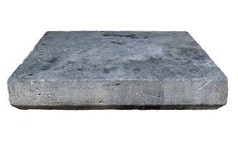Concrete is a material that is used in construction . It is usually made by mixing lime or cement with gravel , sand and water : when it dries and sets, the concrete hardens and gains strength.
 The concrete formula, also called concrete , involves the combination of a binder (cement), aggregates (aggregates such as gravel and sand) and water . Sometimes various additives are also used to modify its characteristics.
The concrete formula, also called concrete , involves the combination of a binder (cement), aggregates (aggregates such as gravel and sand) and water . Sometimes various additives are also used to modify its characteristics.
Depending on the variation in the proportions of the different components, concrete has different properties. In this framework, a distinction can be made between light concrete (with a density of 1800 kg/m³), normal concrete (density of about 2200 kg/m³) and heavy concrete (density of more than 3200 kg/m³).
Although it has very good resistance to compressive stress, concrete does not react in the same way to other types of stress (bending, traction, etc.). Therefore, it is often associated with steel structures, giving rise to the so-called reinforced concrete .
In numerous constructions, concrete is used as a material and it is considered that it brings with it a series of important advantages, among which we can highlight the following:
-It is a really durable and resistant material.
-It has an undeniable quality that is transmitted to the buildings that are erected with it
-It also stands out for its versatility. And it can be used in all types of constructions and buildings.
-Offers anti-seismic protection.
-It has excellent insulating protection, which means that the buildings that use it are well insulated not only thermally but also from an acoustic point of view.
-It can be easily found in the market.
-Likewise, in this list of advantages we must not fail to include the fact that it is a material that can be recycled.
Minerals and asphalt are added to asphalt concrete . This type of concrete is often used as waterproofing and in road construction.
In ancient times, the Egyptians, Greeks and Romans already carried out different works with concrete. As history progressed, the production of the material was perfected, until in the 20th century it was possible to obtain cement of homogeneous quality to produce a useful and valuable concrete for multiple constructions.
Currently, concrete production usually includes the use of recycled materials among the components. In this way we seek to reduce the environmental impact.
For some time now, concrete has become a widely used material in the construction of homes. This is due to the fact that currently the industrial style has become fashionable at the level of interior design, which has it as one of its fundamental pillars.
Likewise, we must not overlook the existence of different books on concrete that thoroughly explain all its properties, its pros and cons. This would be the case of the one entitled “Hormigón”, which was published in 2013 and was written by the author Manuel Fernández Cánovas.
